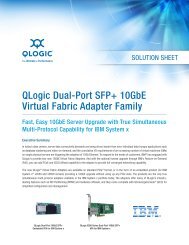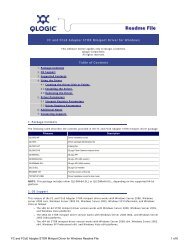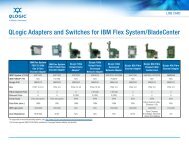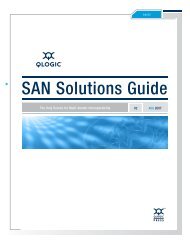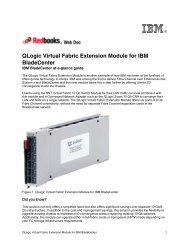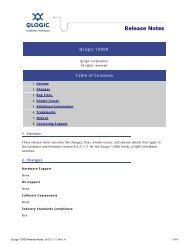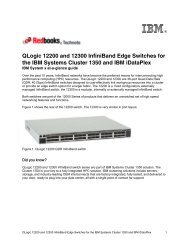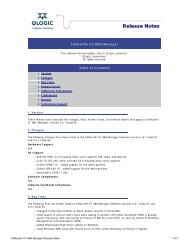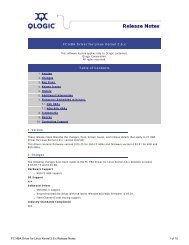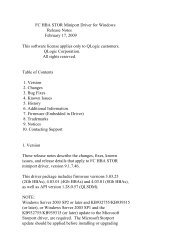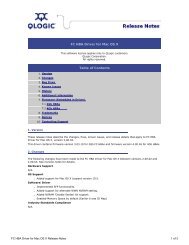Fabric Manager Users Guide, Version 6.1, Revision A - QLogic
Fabric Manager Users Guide, Version 6.1, Revision A - QLogic
Fabric Manager Users Guide, Version 6.1, Revision A - QLogic
You also want an ePaper? Increase the reach of your titles
YUMPU automatically turns print PDFs into web optimized ePapers that Google loves.
2–Advanced <strong>Fabric</strong> <strong>Manager</strong> Capabilities<br />
<strong>Fabric</strong> Multicast Routing<br />
Conserving Multicast LIDs<br />
Most InfiniBand switches have a limitation of 1024 multicast LIDs (MLIDs).<br />
However IPv6 (and possibly other applications) can create numerous multicast<br />
groups. In the case of IPv6, there is one Solicited-Node multicast group per<br />
Channel Adapter port. This results in an excessively large number of multicast<br />
groups. Also in large fabrics, this quickly exceeds MLIDTableCap. For example,<br />
a 2000 node fabric with IPv6 would need over 2000 multicast groups.<br />
To address this situation, the SM can share a single MLID among multiple<br />
Multicast groups. Such sharing means both the routes, and destinations will be<br />
shared. This may deliver some unrequested multicast packets to end nodes,<br />
however unneeded packets will be silently discarded by the InfiniBand transport<br />
layer in the Host Channel Adapter/Target Channel Adapter and will have no<br />
impact on applications.<br />
The SM allows the administrator to configure sets of multicast groups which will<br />
share a given pool of Multicast LIDs. This is accomplished using the MLIDShare<br />
sections in the configuration file.<br />
MLID sharing can conserve the hardware MLID tables so other uses of multicast<br />
can be optimized/efficient.<br />
By default the SM will share a pool of 500 LIDs among all IPv6 solicited-node<br />
multicast groups. Thus in fabrics of 500 nodes or less, a unique LID will be used<br />
for every multicast group. However in larger fabrics, LIDs will be shared so that<br />
there are still over 500 unique LIDs available for other multicast groups, such as<br />
the IPoIB broadcast group and other multicast groups which may be used by<br />
applications.<br />
Precreated Multicast Groups<br />
The first end node which joins a multicast group will also create the multicast<br />
group. When a multicast group is created, critical parameters such as the MTU<br />
and speed of the multicast group are also established. The selection of these<br />
values must carefully balance the performance of the multicast group against the<br />
capabilities of the hardware which may need to participate in the group in the<br />
future. For example if an application on a DDR Host Channel Adapter with a 4K<br />
MTU creates a 4K DDR multicast group, it will prevent subsequent joins of the<br />
group by SDR or 2K MTU Host Channel Adapters.<br />
Some ULPs and applications, such as IPoIB, require key multicast groups, such<br />
as the IPv4 broadcast group, to be pre-created by the SM.<br />
Pre-created multicast group configurations are specified in the MulticastGroup<br />
sections of the SM configuration files. When the multicast groups are pre-created,<br />
their MTU and speed are defined by the SM configuration file, allowing the<br />
adminstrator to be able to account for anticipated hardware capabilities and<br />
required performance.<br />
2-18 IB0054608-01 B



